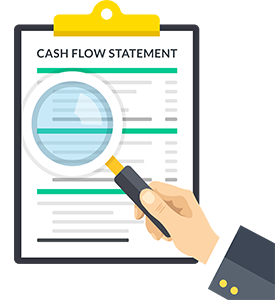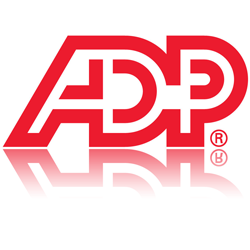Eight ideas to make filing your tax return easier
 Consider these suggestions for helping to make tax season smooth sailing this year for your small business:
Consider these suggestions for helping to make tax season smooth sailing this year for your small business:
- Make your estimated tax payments. Tuesday, January 18th is the due date to make your 4th quarter payment for the 2021 tax year. Now is also the time to create an initial estimate for first quarter 2022 tax payments. The due date for this payment is Monday, April 18.
- Reconcile your bank accounts. Preparing an accurate tax return starts with accurate books. Reconciling your bank accounts is the first step in this process. Consider it the cornerstone on which you build your financials and your tax return. Up-to-date cash accounts will also give you confidence that you’re not over-reporting (or under-reporting!) income on your tax return.
- Organize those nasty credit card statements. If you use credit cards for your business, develop an expense report for these expenditures, if you have not already done so. The report should recap the credit card bill and place the transactions in the correct expense accounts. Attach actual copies of the expenses in the credit card statement. You will need this to support any sales tax paid in case of an audit. Use this exercise to show you are only including business-related expenses by reimbursing your business for any personal use of the card.
- Reconcile accounts payable. One of the first tax deadlines for many businesses is issuing 1099 forms to vendors and contractors at the end of January. Get your accounts payable and cash disbursements up-to-date so you have an accurate account of which vendors you paid.
- Get your information reporting in order. Now identify anyone you paid during the year that will need a 1099. Look for vendors that are not incorporated like consultants or those in the gig economy and don’t forget your attorneys. You will need names, addresses, identification numbers (like Social Security numbers) and amounts billed. Send out W-9s as soon as possible to request missing information.
- File employee-related tax forms. If you have employees, file all necessary W-2 and W-3 forms, along with the applicable federal and state payroll returns (Forms 940 and 941). Do this as soon as possible in January to allow time to identify any potential problems.
- Compile a list of major purchases. Prepare a list of any purchases you made during 2021 that resulted in your business receiving an invoice for $2,500 or more. Once the list is compiled, find detailed invoices that support the purchase and create a fixed asset file. This spending will be needed to determine if you wish to depreciate the purchase over time, take advantage of bonus depreciation, or expense the purchase using code section 179. Your choices create a great tax planning tool.
- Review the impact of COVID-19. There are a number of federal and state initiatives that will need to be considered when filing your 2021 tax return. If you received payroll credits for employee retention or have a Paycheck Protection Program loan that needs to be accounted for this year, be prepared with the details. It will be important to correctly account for these funds.
 Understanding how our tax system works can be tricky for anyone. Whether you’re an adult who never paid much attention to the taxes being withheld from your paycheck or a kid who just got his or her first job, understanding the basics can help refine and define questions you may have.
Understanding how our tax system works can be tricky for anyone. Whether you’re an adult who never paid much attention to the taxes being withheld from your paycheck or a kid who just got his or her first job, understanding the basics can help refine and define questions you may have.
Many schools don’t teach these tax lessons. This results in many people entering life with a pretty incomplete picture of how taxes work, unless someone else takes the time to explain these tax concepts. Here are some pointers to help you or someone you know navigate our tax maze.
Taxes are mandatory!
While we can have a debate about how much each person should pay, there’s no debating that local, state and federal governments need tax revenue to run the country. These funds are used to build roads, support education, help those who need financial assistance, pay interest on our national debt and defend the country.
There are many types of taxes
When you think of taxes, most think of the income tax, which is a tax on business and personal income you earn from performing a job. But there are also other types of taxes. Here are some of the most common.
- Payroll taxes. While income taxes can be used to pay for pretty much anything the government needs money for, payroll taxes are earmarked to pay for Social Security and Medicare benefits.
- Property taxes. These are taxes levied on property you own. The most common example of this is the property tax on a home or vacation property.
- Sales tax. These are taxes placed on goods and services you purchase. While most of this tax is applied at the state and local levels, there are also federal sales taxes on items like gasoline.
- Capital gains taxes. If you sell an investment or an asset for a profit, you may owe capital gains taxes. The most common example of this is when you sell stock for a gain. Capital gains taxes could also come into play with other assets, such as a rental property you sell for a profit.
- Estate taxes. This tax is applied to assets in your estate after you pass away.
Not all income is subject to tax
Most, but not all, of your income is subject to tax.
- While your paycheck is subject to tax, interest earned from certain municipal bonds is not. And the government often excludes things like benefits from the tax man.
- Capital gains taxes have exclusions for gains on the sale of your home and donated stock.
- Estate taxes have an exclusion, so only estates in excess of the exclusion are taxed.
This is why having someone in the know can be really helpful in navigating these rules.
The progressive nature of income tax
When it comes to income taxes, the government gets to take the first bite. The question is how BIG of a bite the government gets to take.
For example, if you only have one chocolate chip cookie, the government’s bite is really, really small. If you have 1,000 chocolate chip cookies, the government takes a small bite from the first 100 cookies, a larger bite from the next 100 cookies, and an even larger bite from the remaining 800 cookies.
This is called a progressive tax rate system. For example, if you’re considered single for tax purposes in 2021, the first $9,950 of taxable money you earn gets taxed at 10%. The next $30,575 you earn gets taxed at 12%. The next $45,850 gets taxed at 22%. Money you earn above this point will get taxed at either 24%, 32%, 35% or 37%.
Understanding the progressive nature of our tax system is a key concept in managing the size of the bite the government takes. That is why tax planning is so important!
Deductions can decrease the government’s tax bite
The progressive tax system is complex because it is manipulated in a big way by our elected officials. This is typically done through credits, deductions and phaseouts of tax benefits.
For example, there is a fairly complex deduction for families with children, and the earned income tax credit is an added tax cut for those in the lower end of the progressive income tax base. There are also credits and deductions for businesses, homeowners, education and many more types of taxpayers.
As you can imagine, the U.S. tax system is very complex with many nuances. Please seek help if you have further questions or are facing a complicated taxable transaction.
 Small business owners, self-employed workers and freelancers received some welcome news when Congress recently passed the Paycheck Protection Flexibility Act. This new law clarifies how businesses can qualify to have all or a portion of its Paycheck Protection Program (PPP) loan forgiven.
Small business owners, self-employed workers and freelancers received some welcome news when Congress recently passed the Paycheck Protection Flexibility Act. This new law clarifies how businesses can qualify to have all or a portion of its Paycheck Protection Program (PPP) loan forgiven.
Here is what you need to know:
December 31, 2020 is the new deadline to spend loan proceeds. When the PPP program was rolled out this spring, businesses were given 8 weeks after loan funding to use the loan’s proceeds if they wanted to qualify for loan forgiveness. That timeline has now moved to 24 weeks. Due to the extended stay-at-home orders and further assessment of the pandemic, the new deadline is now effectively December 31, 2020.
More loan proceeds can be used for non-payroll expenses. The original law required 75% of loan proceeds to be spent on payroll. For businesses with high cost of goods sold or who had trouble convincing furloughed workers to return to work, hitting this 75% threshold was problematic. The new law reduces the amount of loan proceeds required to be spent on payroll to 60%.
More flexibility in fully restoring workforce. Borrowers now have through December 31, 2020 to restore their workforce levels and wages to the pre-pandemic levels required for full forgiveness. There are three exceptions allowed for not having a fully-restored workforce by Dec. 31. Borrowers can adjust their loan forgiveness calculations because of:
- Employees who turned down good faith offers to be re-hired at the same hours and wages as before the pandemic;
- Difficulty finding qualified employees;
- COVID-19 related operating restrictions
Loan terms extended. For loans that do not qualify for forgiveness, borrowers now have up to five years to repay the loan instead of two. The interest rate remains at 1%. Since your bank has 60 days to process your loan forgiveness application and the SBA has 90 days to process the request, your initial payment is now effectively five to six months after your forgiveness application.
What you need to do
- Download EZ Application Form. If you are a self-employed worker, independent contractor or sole proprietor who has no employees, you may be eligible to use the EZ Loan Forgiveness Application. Click here to download the EZ form. Click here to download instructions for the EZ form.
- Download Regular Application Form. If you aren’t eligible to use the EZ Loan Forgiveness Application, then you’ll need to complete the regular loan forgiveness application. Click here to download the regular application.
- Stay in contact with your lending institution about when and how to complete the loan forgiveness application.
- Consider reaching out to your legislators to let your voice be heard on how you were impacted and to share your story on your PPP loan experience as several U.S. Senators indicated that there will be more changes in the future regarding the program.
 When tracking and planning your business objectives, it’s easy to focus your analysis on two reports — the income statement and balance sheet. But one of the primary keys to your business’s success relies more on how you handle the money flowing in and out of the business. The appearance of a solid profit can hide a lurking cash flow problem.
When tracking and planning your business objectives, it’s easy to focus your analysis on two reports — the income statement and balance sheet. But one of the primary keys to your business’s success relies more on how you handle the money flowing in and out of the business. The appearance of a solid profit can hide a lurking cash flow problem.
Here are practices to help you give your cash flow the attention it deserves:
- Understand your cash position. Start with simply getting in the habit of monitoring your bank account activity daily to watch for mistakes or unforeseen charges. Then look at each business process that involves cash — purchasing, inventory, collections and payroll are good examples. Consider extending terms for paying vendors, establishing shorter terms for customers to pay and implementing a review process to ensure accurate payroll calculations. Also explore opportunities to turn over your inventory faster.
- Create a cash flow statement forecast. With your knowledge of cash, create a forward-looking statement of monthly cash flow. It will reflect the ebbs and flow of cash throughout the year and identify times of cash crunch. You can then see the impact of changes you are making on your company’s cash position.
- Identify relevant ratios. There are many helpful cash flow ratios. Identify ratios that are especially helpful to your business. Have debt? Consider the cash flow coverage ratio (operating cash flow ÷ by debt) to help plan for scheduled debt payments. Making a lot of capital purchases? Use the free cash flow calculation (operating cash flow – capital expenditures) to determine how much cash will be left over after the purchases.
- Build in some contingencies. Most businesses experience seasonality. Understanding your business cycles can help you strategically manage cash in high cash months to cover shortfalls that come in low cash months. Set up a line of credit so it’s available in the case of an emergency, or as a bridge during short-term liquidity needs. A line of credit only charges interest only when used, so it’s a perfect tool to have at your disposal.
- Watch for hidden cash hijackers. Oftentimes, large cash expenditures can be hidden on your income statement or balance sheet. A few examples are payments on capital purchases, debt obligations, dividends, guaranteed payments to partners and taxes. Income taxes, when not accounted for correctly, can cause a twofold problem — a large lump sum that is due in a short amount of time, plus a larger obligation to account for going forward. Don’t wait until the end of the year to project your tax provision.
- Appoint someone to manage cash. As with many business processes, important details can fall through the cracks if there is not clear accountability as to who is responsible for the task. So assign yourself or someone you trust to manage the company’s cash flow.
When businesses fail, it’s usually because they run out of money. By making cash flow a central part of your business plan, you greatly reduce this risk.
 According to the Association of Certified Fraud Examiners, nearly 30 percent of businesses are victims of payroll malfeasance, with small businesses twice as likely to be affected as large businesses. Here are four scary payroll fraud schemes you need to know:
According to the Association of Certified Fraud Examiners, nearly 30 percent of businesses are victims of payroll malfeasance, with small businesses twice as likely to be affected as large businesses. Here are four scary payroll fraud schemes you need to know:
- Ghost employees. A ghost employee does not exist anywhere except in your payroll system. Typically, someone with access to your payroll creates a fake employee and assigns direct deposit information to a dummy account so they can secretly transfer the money into their own bank account.
- Time thieves. Time stealing happens when employees add more time to their timecard than they actually worked. Sometimes multiple employees will team up to clock each other in earlier than when they arrive or later than when they depart for the day.
- Shape-shifting commissions. In an attempt to bump up a commission payment or attain a quota, sneaky sales employees may alter a sales contract to their benefit. A typical tactic used by a dishonest salesperson is to make a booked sale appear larger than it is and then slide a credit memo through the system in a later period. Companies with complicated commission calculations or weak controls in this area are the most vulnerable.
- External swindlers. A popular scam, known as phishing, starts with a fraudster impersonating a company executive through email or over the phone asking an employee with access to payroll data to wire money or provide sensitive information. These imposters can make the correspondence look very real by using company logos, signatures and email addresses.
Tips to combat payroll fraud
Being aware of the threats is a start, but you also need to know how to stop them. Here are some tips to reduce your company’s payroll fraud risk:
- Better internal controls. While most employees are trustworthy, giving too much control over your payroll to one person is not a good idea. Separating payroll duties and formalizing an approval process protects both your business and your employees.
- Review payroll records. Designate someone outside of the payroll-processing department to periodically review the payroll records. Have them review names, pay rates and verify that the total payroll matches what was withdrawn from the business bank account.
- Perform random internal audits. During an internal audit is when you can really get into the details to look for potential payroll fraud. You can do an in-depth review of the whole payroll system or select a random sample of dates and employees. Keep the timing of the audit under wraps to prevent giving someone the chance to cover up their misdeeds.
Managing your business payroll is a daunting task by itself, and actively protecting against fraud adds additional complexity.
Once again, this past year has brought us a series of complex legislative changes that affect the way business owners operate, from the Affordable Care Act to proposed changes to overtime laws that may have a direct impact on how millions of employees are compensated and classified.
With the enormous responsibility business owner’s bear in today’s economic climate, keeping up to date with and adhering to complex tax and compliance regulations can be difficult. To help ensure you are taking the right steps to minimize the risk you face as a small business owner, our firm partners with ADP®. Our local ADP sales representative works very closely with our firm and our small business clients to implement tools that can help them better manage their cash flow, attract and retain employees, and minimize overall risk.
If you are interested in any of ADP’s services, please contact either myself or our ADP sales representative directly. Their contact information can be found below:
Adam Hout
949-374-4460
